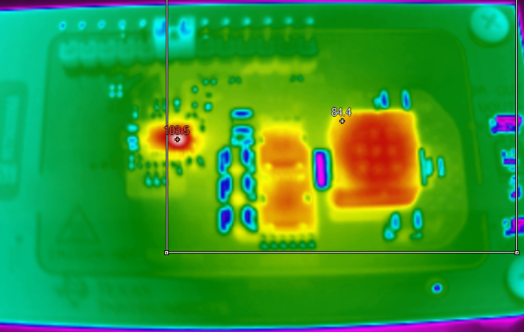Other Parts Discussed in Thread: LM5149, LM5148, LM5149-Q1
Tool/software:
Hi,
I just received a fresh EVM today and performed a simple test. The board was powered with a typical input voltage of 48 V and gradually loaded up to 8 A using an electronic load, tested in an open area.
I noticed that the IC temperature rises significantly higher than other power components such as the inductor and MOSFET. No configuration changes were made—the setup was simply input wiring, power supply, and load connection.
Temperature data of my measurement:

Data obtained from TI evm datasheet

As an additional note: from TI’s documentation, the LM5148 is a similar device with comparable performance and is pin-to-pin compatible with the LM5149 on this EVM. When we swapped in the LM5148 under the same loading conditions, the IC temperature was noticeably lower compared to the LM5149.
Has anyone else encountered this behavior of LM5149? Could there be a setup detail or characteristic of the LM5149 that explains the higher temperature rise? Is there any reason behind for the IC temperature issue?
Thanks in advance for your insights.




